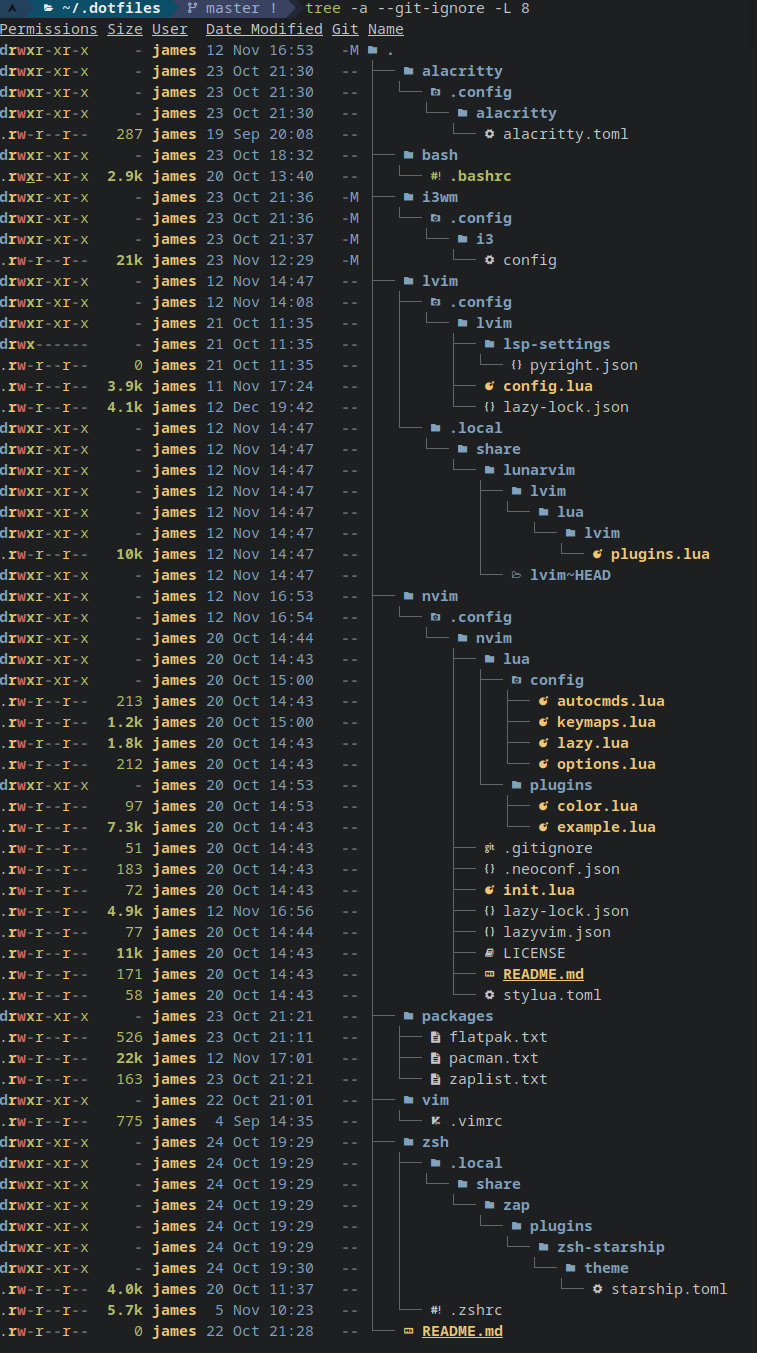Saving dotfiles with GNU Stow and Git
Table of Contents
The dotfiles problem
If you’re a Linux user, I’m sure you’ve encountered the main issue with dotfiles—they’re all over the place. This makes version control and backing them up with Git a pain, as it’s a lot of work to make a Github repo for all those different dotfiles. Fortunately, there’s an elegant solution with using GNU Stow, which should come already installed with most Linux distros.
Creating symlinks with GNU Stow
Stow is a symbolic link manager. It allows the user to move all their dotfiles into one directory (which can be easily version controlled with Git), while still having the dotfiles linked to their original directory. So any program that needs to read that dotfile (i.e. the configuration file) can still read it were still in it’s original location.
As an example, here’s how to “stow” your .zshrc file.
# create the dotfiles dir with a sub-dir for zsh
mkdir -p ~/.dotfiles/zsh
# good idea to backup you .zshrc file first
cp ~/.zshrc ~/.backup/.zshrc.bak
# move the .zshrc to the stow folder
mv ~/.zshrc ~/.dotfiles/zsh
# create the symlink with stow
stow -d ~/.dotfiles -t ~ zsh
An important thing to remember with stow is that the dotfile you are “stowing” must be contained within a directory structure that exactly matches that of the original directory structure.
For instance, your .zshrc dotfile is housed within the ~/.dotfiles/zsh directory, where the /zsh dir resembles your home dir.
But if a dotfile is contained in further subdirectories away from your home dir, then these subdirectories must be included in the ~/.dotfiles structure.
It’s easier to explain with an example.
Say you want to “stow” your keymaps.lua config file for your neovim setup, the setup would look like so:
# create a new stow dir called "neovim" that also contains a dir structure that mirrors the real neovim dir structure
mkdir -p ~/.dotfiles/neovim/.config/nvim/lua/config
# backup your config file of interest
cp ~/.config/nvim/lua/config/keymaps.lua ~/.backup/keymaps.lua.bak
# move your config file to the stow folder
mv ~/.config/nvim/lua/config/keymaps.lua ~/.dotfiles/neovim/.config/nvim/lua/config
# create the symlink
stow -d ~/.dotfiles -t ~ neovim
A useful mental trick that Christian Chiarulli has is to pretend that, once you are inside your ~/.dotfiles/<DIR_NAME> of interest, pretend that this is now your home dir.
So if you were to navigate to your neovim config files from your home dir, you would cd .config/nvim/lua/config to get to your config file of interest.
This is essentially how the GNU stow program sees things too, so the directory structures must follow this pattern for the program to create the symlinks in their proper locations.
Backing up and version control with Git
The whole point (for me at least) of using GNU stow is that it makes saving dotfiles on Github so much easier. Not only that, but it makes cloning and symlinking specific dotfiles to my work PC or second Linux laptop much more efficient. For example, here’s how I’ve organised my dotfiles with stow:

And here’s a closer look of the directory structure and the kinds of dotfiles I’ve “stowed”

Taking a look in my home directory, here’s what the “stowed” symlinks look like for those dotfiles that typically reside in the home dir:

You can check out my dotfiles on Github as well.
That’s everything. I just think GNU stow is neat!